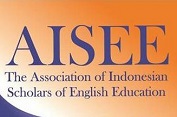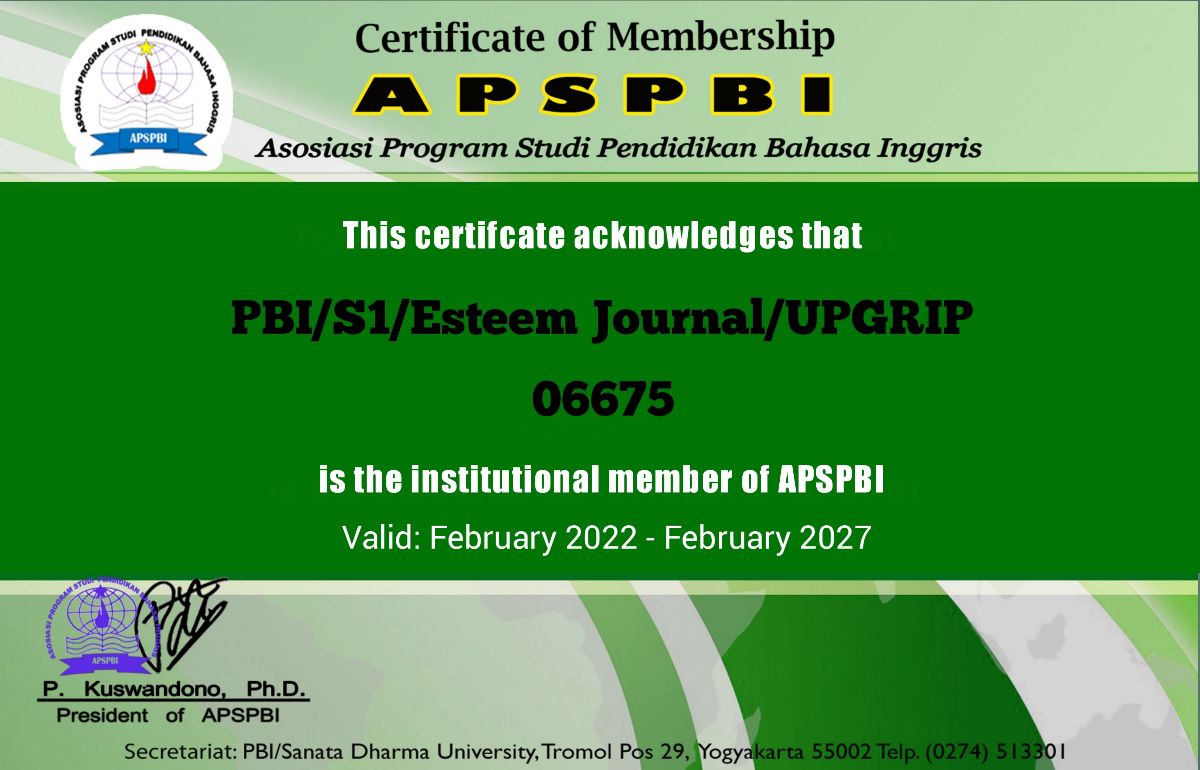PORTRAIT OF EFL LEARNERS’ WRITINGS: ERRORS, CHALLENGES AND SOLUTIONS
DOI:
https://doi.org/10.31851/esteem.v4i1.5126Keywords:
Grammatical Errors, Lexical Errors, Writing Challenges, Alternative Solutions, Students’ PerspectivesAbstract
This study aimed to analyze EFL learners’ writings. It focused on portraying the most dominant grammatical and lexical errors in writing. It also explored challenges and alternative solutions from students’ perspectives. A qualitative approach in terms of descriptive design was applied in this study. The participants were thirty sophomores from four different faculties of a private university that were selected using stratified random sampling. Writing test, questionnaire, and interview were instruments to collect the data. Collecting, identifying, classifying, and describing were modified data analysis stages used in this study. The results revealed 445 grammatical errors and 111 lexical errors found in students’ writing. Limited knowledge of grammar and vocabulary, lack of practice and motivation, and unsatisfactory writing skills are the most common students’ writing challenges. The students also believed that review and feedback, various material, exercise and assignment exposure, and supporting technological tools are alternative solutions to anticipate the errors and challenges. The data of writing errors, challenges, and alternative solutions provide beneficial insights for the lecturers to formulate proper teaching methods, materials, and activities in writing.
References
Ananda, R., Gani, S., A., & Sahardin, R. (2014). A study of error analysis from students’ sentences in writing. Studies in English Language Education, 1(2), 81-95.
Anh, D., T., N. (2019). EFL student’s writing skills: Challenges and remedies. IOSR Journal of Research & Method in Education, 9(6), 74-84.
Anjayani, P., & Suprapto. (2016). Error analysis on the use of prepositions in students’ writing: A case study of the eleventh-grade students of SMA Negeri 9 Semarang in the academic year of 2014/2015. Journal of English Language Teaching, 5(2), 1-6.
Ardiansyah, Fachri., Jaya, Aswadi. (2020). Extendinfg the Students’ Narrative Text Comprehension through Reading SMART Protocol. ESTEEM Journal of English Study Programme. Vol 3 (1).
Ariyanti. (2016). The teaching of EFL writing in Indonesia. Dinamika Ilmu, 16(2), 263-277.
Ariyanti, A., & Fitriana, R. (2017). EFL Students’ difficulties and needs in essay writing. Advances in Social Science, Education and Humanities, 158, 111–121.
Common European Framework of References for Languages. (2020). The CEFR Levels. https://www.coe.int/en/web/common-european-framework-reference languages/level-descriptions
Cons, M., A. (2012). The use and misuse of academic words in writing: Analyzing the writing of secondary English learners and redesigned learners. TESOL Journal, 3(4), 610-638.
Dodigovic, M., & Wang, S. (2015). The misuse of academic English vocabulary in Chinese student writing. US-China Foreign Language, 13(5), 349-356
Ellis, R. (1986). Understanding second language acquisition. Oxford: Oxford University Press.
Ellis, R. (1994). The study of second language acquisition. New York: Oxford University Press.
Fareed, M., Ashraf, A., & Bilal, M. (2016). ESL learners’ writing skills: Problems, factors and suggestions. Journal of Education & Social Sciences, 4(2), 83–94.
Graham, S., & Perin, D. (2007). Writing next effective strategies to improve writing of adolescents in middle and high school. New York, NY: Alliance for Excellent Education.
Heydari, P., & Bahgeri, M., S. (2012). Error analysis: Sources of L2 learners’ errors. Theory and Practice in Language Studies, 2(8), 1583-1589.
Jaya, A. 2017. Sentence Patterns of Narrative Text in English Textbook in Indonesia. English Community Journal. 1 (2).
Listyani. (2018). Promoting academic writing students’ skills through “process writing†strategy. Advances in Language and Literary Studies, 9(4), 174-179.
McMillan, J. H., & Schumacher, S. (2010). Research in education: Evidence-based inquiry. (7th ed.). Boston, MA: Pearson.
Nassaji, H. (2015). Qualitative and descriptive research: Data type versus data analysis. Language Teaching Research, 19(2) 129-132.
Nie, Y., & Zhou, L. (2017). A study of vocabulary learning strategies used by excellent English learners. Research on Modern Higher Education, 4, 101-106.
Seitova, M. (2016). Error analysis of written production: The case of 6th grade students of Kazakhstani school. Procedia-Social and Behavioral Sciences, 232, 287-293.
Sugeng, B. (2016). Common grammatical errors in the use of English as a foreign language: A case in students’ undergraduate thesis. LITERA, 15(1), 111-119.
Suvarnamani, S. (2017). A study of grammatical and lexical errors in descriptive writing of first years Arts students at Silpakorn University. Journal of Social Science, Humanities, and Arts, 12 (2), 239-26
Downloads
Published
Issue
Section
License
Copyright Notice
Authors who publish with this journal agree to the following terms:
In order to assure the highest standards for published articles, a peer review policy is applied. In pursue of the compliance with academic standards, all parties involved in the publishing process (the authors, the editors and the editorial board and the reviewers) agree to meet the responsibilities stated below in accordance to the Journal publication ethics and malpractice statement.
Duties of Authors:
- The author(s) warrant that the submitted article is an original work, which has not been previously published, and that they have obtained an agreement from any co-author(s) prior to the manuscript’s submission;
- The author(s) should not submit articles describing essentially the same research to more than one journal;
- The authors(s) make certain that the manuscript meets the terms of the Manuscript Submission Guideline regarding appropriate academic citation and that no copyright infringement occurs;
- The authors(s) should inform the editors about any conflict of interests and report any errors they subsequently, discover in their manuscript.
Duties of Editors and the Editorial Board:
- The editors, together with the editorial board, are responsible for deciding upon the publication or rejection of the submitted manuscripts based only on their originality, significance, and relevance to the domains of the journal;
- The editors evaluate the manuscripts compliance with academic criteria, the domains of the journal and the guidelines;
- The editors must at all times respect the confidentiality of any information pertaining to the submitted manuscripts;
- The editors assign the review of each manuscript to two reviewers chosen according to their domains of expertise. The editors must take into account any conflict of interest reported by the authors and the reviewers.
- The editors must ensure that the comments and recommendations of the reviewers are sent to the author(s) in due time and that the manuscripts are returned to the editors, who take the final decision to publish them or not.
Authors are permitted and encouraged to post online a pre-publication manuscript (but not the Publisher final formatted PDF version of the Work) in institutional repositories or on their Websites prior to and during the submission process, as it can lead to productive exchanges, as well as earlier and greater citation of published work (see The Effect of Open Access). Any such posting made before acceptance and publication of the Work shall be updated upon publication to include a reference to the Publisher-assigned DOI (Digital Object Identifier) and a link to the online abstract for the final published Work in the Journal.





















